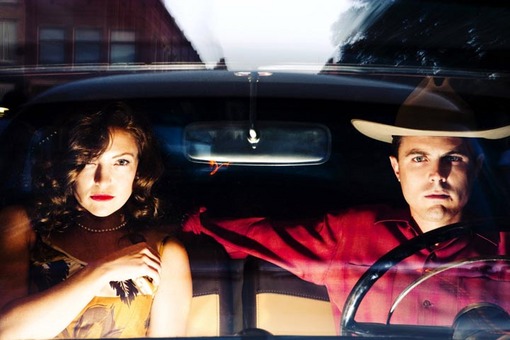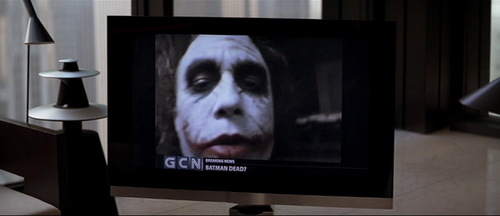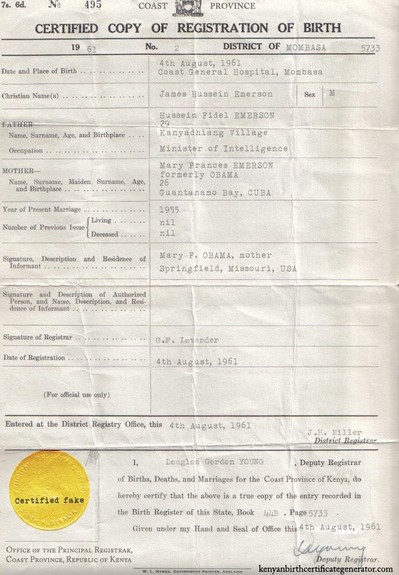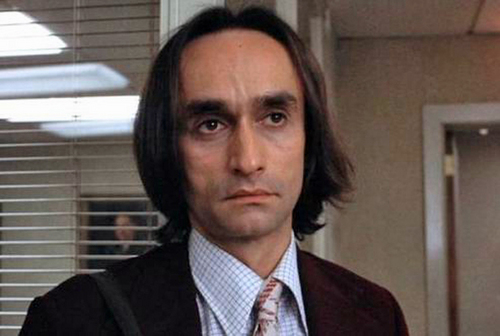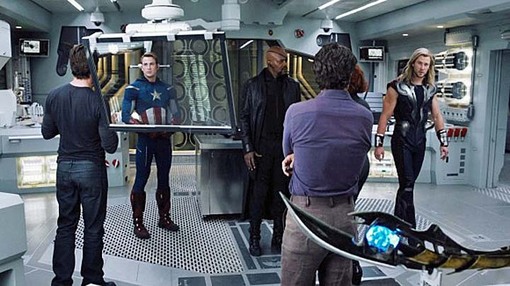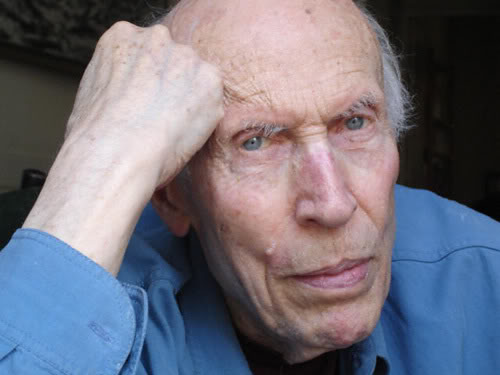Opening Shots: ‘Day for Night’
A bus crosses the frame from left to right and we follow a woman in red walking from right to left, who stops to get a magazine. Notice the curves and circles that establish a pattern for the shot — the curb, the kiosk, the fountain.
View image The bus re-enters in the background, driving around the circle and now moving in the same direction as the lady in red and the camera — an indication that the shot (and the movie) will loop back upon itself.
From Kathleen Carroll, co-founder and artistic director of the Lake Placid Film Forum (and “non-practicing film critic”):
I still smile at the very thought of Francois Truffaut’s opening shot in “Day for Night,” the amazingly long tracking shot that gradually reveals the film-within-the-film. I interviewed Truffaut at the time that “Day for Night” was first released in this country. This is how he explained his purpose for making the film. “I wanted to show a film to the public about the making of a film, a film that would give the most information and from which one could learn the technical aspects of movie making. The film will help those who are thinking about making films. And, as far as the ordinary public is concerned, the film doesn’t spoil anything.”
View image Still following the woman in red, a pair of figures in black appear in the background, moving forward on the diagonal, on a trajectory that just might intersect with the camera’s. Will the shot turn out to be about them instead of the lady in red? Or are they somehow connected with the lady in red?
View image The pair in black split up. The woman heads down the subway entrance — and so does the lady in red. The man in black continues toward the camera. Are we going to meet up with this guy?
During the same interview Truffaut told a funny story about “Jules and Jim” which, as he explained, he deliberately tried to make “like an MGM film.” There were those who did not see “Jules and Jim” as just another MGM movie. When the film was first released here, the then all-powerful Legion of Decency (which later became known as The National Catholic Office of Motion Pictures) threatened to give it a condemned rating. Truffaut was asked to speak to a group of priests on behalf of the film. He went reluctantly, feeling “like a little juvenile delinquent.”
View image Nope. The man in black falls out of the frame and the lady in red descends into the subway, casting a (fond?) look back as she leaves us. We fix upon another lady, one we saw back at the magazine vendor, walking a dachshund.
“Do you realize the girl in the film is behaving like Elizabeth Taylor?” asked one of the priests. “It was the time of ‘Cleopatra,'” and the Taylor-Burton affair was all over the newspapers,” recalled Truffaut. “I pretended that I didn’t know what he was talking about.” “It’s in the newspapers,” insisted the priest. “I only read film reviews,” said Truffaut.
View image Jean-Pierre Leaud comes out of the subway, and turns in the direction the camera is already moving. OK, we’re abandoning the lady with the dog. This is who we’re going to watch — he’s the star of the movie! (Yes, casting will often tell you how to watch a shot.)
JE: Oh, Kathleen — joy is right! This really may be the Ultimate Opening Shot in many ways, because we actually get to go back into it and critique it in the movie itself. The whole thing looks perfectly random and natural (I don’t want to know how many takes it really took), as if the eye (camera) were just alighting upon one thing and then another as its interest is piqued. But we soon see how carefully and precisely it’s all choreographed. Day for night. Illusion for reality. Artifice in the service of art. Notice, too the use of strong colors like red (dress, car, little girl, etc.) and white (car, overcoat, etc.) — the alternating colors of the awning in the background — and black (suits, car roof, etc.) to focus our attention. Doesn’t this just make you want to go out and make a movie?
(Shot continues after the jump)

